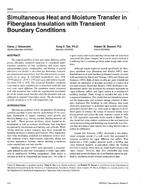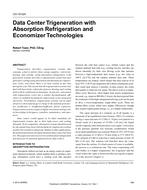The performance characteristics of an air conditioner with a desuperheater were compared by means of computer simulation when the air conditioner used a capillary tube and when it used a thermostatic expansion valve. As a basis for comparison, the air conditioner had the same cooling capacity at the standard test conditions when either of the expansion devices was used and no heat was recovered. The air conditioner had a reciprocating hermatic compressor, and heat was recovered by the desuperheater during the operation of the air conditioner at the standard test conditions. It was found that, when the capillary tube was used, the maximum possible heat recovery and the reduction in power consumption were more than when the thermostatic expansion valve was used. The cooling capacity and total heat rejection remained approximately constant, except at high heat recovery rate, where they decreased. When the thermostatic expansion valve was used, heat recovery did not affect the air conditioner’s capacity and total heat rejection. Heat recovery increased the compressor discharge temperature when the capillary tube was used but decreased it when the thermostatic expansion device was used.
Units: Dual
Citation: ASHRAE Transactions, 1988, vol. 94, pt. 2, Ottawa
Product Details
- Published:
- 1988
- Number of Pages:
- 12
- File Size:
- 1 file , 1 MB
- Product Code(s):
- D-OT-88-3185


